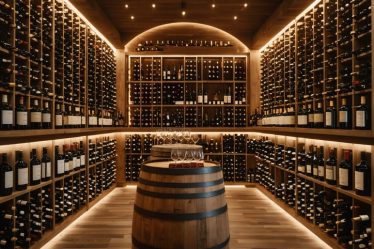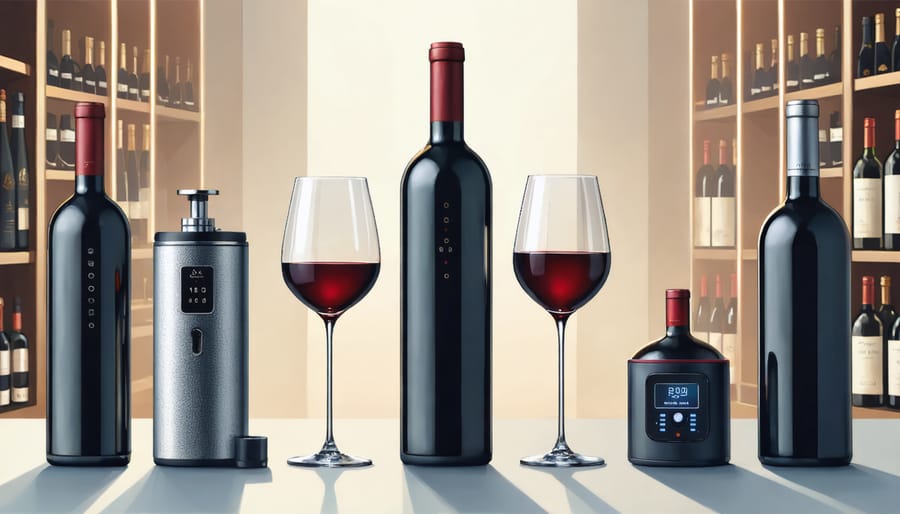
Picture this: you’ve just opened a spectacular bottle of Bordeaux, but only want a single glass. Sound familiar? Wine preservation systems are revolutionizing how we enjoy our favorite vintages, transforming that once-pressing decision between savoring a glass or committing to the whole bottle into a worry of the past.
As a wine enthusiast who’s experienced the heartbreak of pouring out oxidized wine too many times, I’ve discovered that proper preservation methods can extend your wine’s life from mere days to weeks – sometimes even months. Whether you’re a casual sipper or a serious collector, these innovative systems offer a practical solution to maintain the complexity, aromas, and flavors of your opened bottles.
From simple vacuum pumps to sophisticated argon gas systems, today’s wine preservation technology caters to every budget and lifestyle. But with so many options available, choosing the right system can feel as complex as selecting the perfect wine itself. Let’s explore how these game-changing devices can help you enjoy your wine collection one perfect glass at a time, without the pressure of finishing the bottle too quickly.
Why Your Opened Wine Needs Protection
The Science Behind Wine Going Bad
Have you ever opened a bottle of wine, enjoyed a glass, and noticed the taste wasn’t quite the same the next day? Just like how a cut apple turns brown, wine undergoes a similar process called oxidation. When wine meets air, it starts a chemical reaction that can dramatically affect your wine tasting experience. Those lovely fruit flavors begin to fade, and that vibrant color might turn a bit dull or brownish. Think of it as your wine literally aging before your eyes! The tannins (those compounds that give red wine its structure) start breaking down, and those crisp, fresh notes you initially loved become muted. This is why finding the right way to preserve your wine is so important – it’s all about keeping those delightful flavors locked in until you’re ready for your next glass.
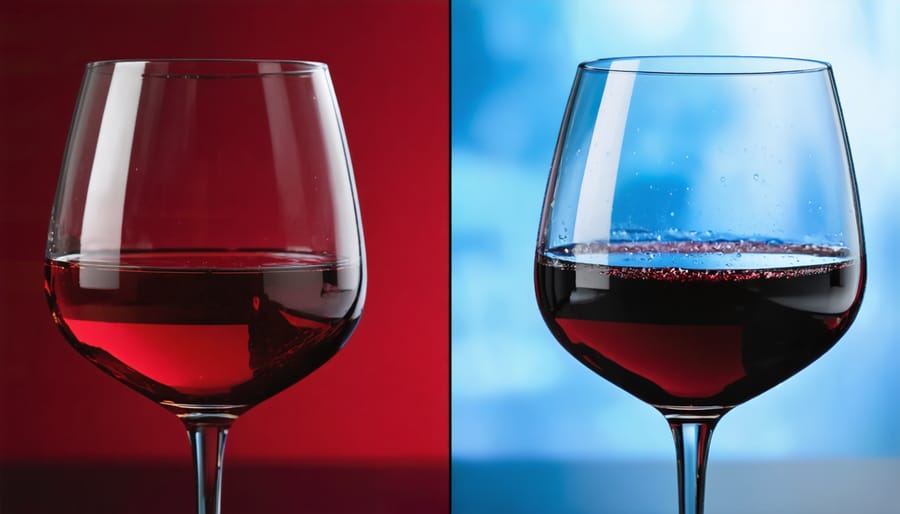
Signs Your Wine Has Lost Its Charm
Ever had that moment when you pour a glass of wine and something just feels… off? Let me share how to spot when your beloved wine has lost its sparkle. The most obvious tell-tale sign is a change in color – red wines turning brownish or white wines deepening to amber. Give it a sniff – if those vibrant fruit aromas have been replaced by a vinegar-like smell or hints of bruised apple, that’s your wine waving goodbye. The taste test is equally revealing; flat, dull flavors or a sharp, acidic bite usually means oxidation has taken over. Trust your instincts – if the wine doesn’t bring you the same joy it did when first opened, it’s probably time to bid it farewell. Remember, even the finest wines can lose their charm within 1-2 days of opening if not properly preserved.
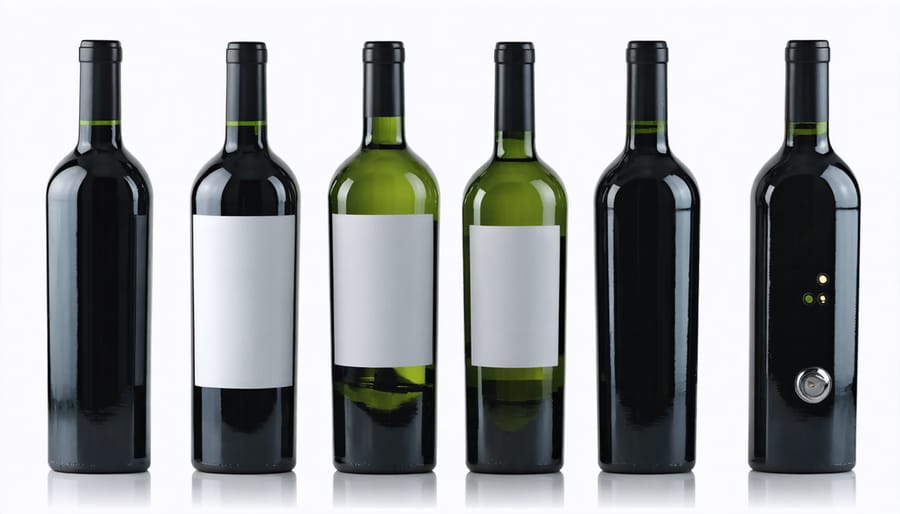
Smart Wine Preservation Systems for Your Home
Vacuum Sealers: Your Entry-Level Solution
Remember my first venture into wine preservation? I was skeptical when my friend showed me her vacuum sealer, but it quickly became my go-to solution for keeping those partially finished bottles fresh. Vacuum sealers are the perfect entry point into wine preservation, offering an affordable and user-friendly way to extend your wine’s life.
These systems work by removing air from the bottle using a manual or electric pump, along with a specialized stopper. The concept is simple: less oxygen means slower oxidation, which helps maintain your wine’s flavors and aromas for several days. While they might not offer the same level of preservation as some high-end systems, they’re perfect for casual wine enthusiasts who typically finish their bottles within a week.
I’ve found vacuum sealers particularly handy for those impromptu glass-of-wine evenings when you don’t want to commit to the whole bottle. They’re compact, require no special installation, and most importantly, they’re budget-friendly. Just remember to pump until you feel resistance, and store your wine in a cool, dark place for best results.
Inert Gas Systems: The Restaurant Secret
Ever wondered how your favorite wine bar keeps their extensive by-the-glass menu so fresh? The secret lies in inert gas preservation systems, a game-changer for achieving perfect wine service that’s revolutionizing how we enjoy our favorite bottles at home.
These systems use argon or nitrogen – naturally occurring gases that are heavier than air – to create a protective blanket over your wine. When you spray these gases into an opened bottle, they gently push out the oxygen (wine’s biggest enemy!) and form an invisible shield that keeps your wine tasting as fresh as the moment you uncorked it.
Think of it as giving your wine a cozy, protective blanket that keeps oxygen from sneaking in and spoiling the party. The best part? These systems are incredibly easy to use – just a quick spritz after each pour, and you’re done! They’re completely safe, tasteless, and won’t affect your wine’s character at all. Plus, they can keep your opened bottles fresh for weeks, making them perfect for solo sippers or occasional wine enthusiasts who like to savor their bottles slowly.
Modern Tech: Smart Wine Preservers
Let me share a game-changing discovery from my wine journey – smart wine preservation systems! These modern marvels use advanced technology to keep your favorite wines tasting fresh for weeks, not just days. Think of them as your personal wine guardian angels!
Popular models like the Coravin and EuroCave use argon gas (the same stuff sommeliers swear by) to protect your wine from oxidation. Just insert the needle through the cork, pour your desired amount, and the system automatically replaces the wine with argon gas. The best part? The cork naturally reseals itself, keeping the remaining wine perfect for your next glass.
For tech-savvy wine lovers, some systems even connect to smartphone apps, tracking your wine collection and reminding you when it’s time for that special bottle. While these gadgets might seem like a splurge, they’re worth every penny if you enjoy savoring premium wines over time or want to explore different wines without committing to finishing the whole bottle in one sitting.
Remember, these systems are especially fantastic for those special occasion wines or when you’re in the mood for just one perfect glass!
Simple But Effective: Transfer Bottles
Sometimes the simplest solutions are the most brilliant, and that’s exactly what I discovered with transfer bottles. These handy little vessels have become my go-to method for preserving those special bottles I can’t finish in one sitting. The concept is beautifully straightforward: you simply pour your remaining wine into a smaller bottle, reducing the amount of air that can interact with the wine.
I love using these 375ml (half-bottle) or 187ml (quarter-bottle) containers because they’re perfect for those times when I’m left with just a glass or two. By transferring the wine into these smaller bottles and ensuring they’re filled close to the top, you’re naturally minimizing oxygen exposure – the main culprit behind wine spoilage.
What I find particularly charming about this method is its accessibility. You can either purchase dedicated wine transfer bottles or clean and reuse smaller wine bottles you already have at home. Just make sure they have secure, airtight caps or corks. While this method might not preserve your wine for weeks, it’s perfect for extending the life of your opened bottle by several days, especially when stored in the fridge.
Making Your Wine Preservation System Work for You
Matching Methods to Your Wine Habits
Let’s be honest – we all have different wine habits, and that’s perfectly okay! I used to feel guilty about not finishing a bottle in one sitting until I realized there’s no “right way” to enjoy wine. The key is matching your preservation method to your unique drinking style.
If you’re a casual sipper who enjoys a glass or two during weeknight dinners, a simple vacuum pump system might be your perfect match. These affordable options can keep your wine fresh for 3-5 days, ideal for when you want to stretch that bottle through the work week.
For weekend wine enthusiasts who love hosting gatherings, consider investing in an argon gas preservation system. These are fantastic for preserving multiple bottles simultaneously – perfect for when different friends prefer different wines! Plus, they typically keep wine fresh for up to two weeks.
Those who savor premium wines slowly might want to look into professional-grade preservation systems. While they’re a bigger investment, they can protect your special bottles for several weeks or even months.
My personal favorite tip? Start by tracking your typical wine consumption for a couple of weeks. Notice how quickly you finish bottles and how many you typically have open at once. This simple exercise will help you choose a preservation system that fits seamlessly into your lifestyle without overcomplicating your wine enjoyment.
Storage Tips That Enhance Preservation
Even the best wine preservation system works better when paired with proper wine storage techniques. I learned this the hard way after storing a lovely Pinot Noir next to my stove – definitely not my finest moment! Let me share some game-changing storage tips that’ll help your wine stay fresh longer.
First, keep your wine away from heat sources and direct sunlight. That means no storage above the refrigerator or near windows. Instead, find a cool, dark spot where the temperature stays consistent – your basement or a dedicated wine fridge is perfect.
Store your bottles horizontally if they have natural corks. This keeps the cork moist and prevents it from drying out and letting air seep in. For screw-cap bottles, vertical storage is perfectly fine.
Here’s a tip I wish I’d known earlier: maintain proper humidity levels (around 60-70%) to prevent cork shrinkage. A small humidifier in your storage area can work wonders. And ladies, remember those fancy wine charms we use at parties? They’re actually great for marking opened bottles with the date you first uncorked them.
For everyday storage, aim for temperatures between 45-65°F (7-18°C). If you’re like me and don’t have a wine cellar, a dedicated shelf in your regular fridge works perfectly fine for opened bottles that you plan to enjoy within the week.
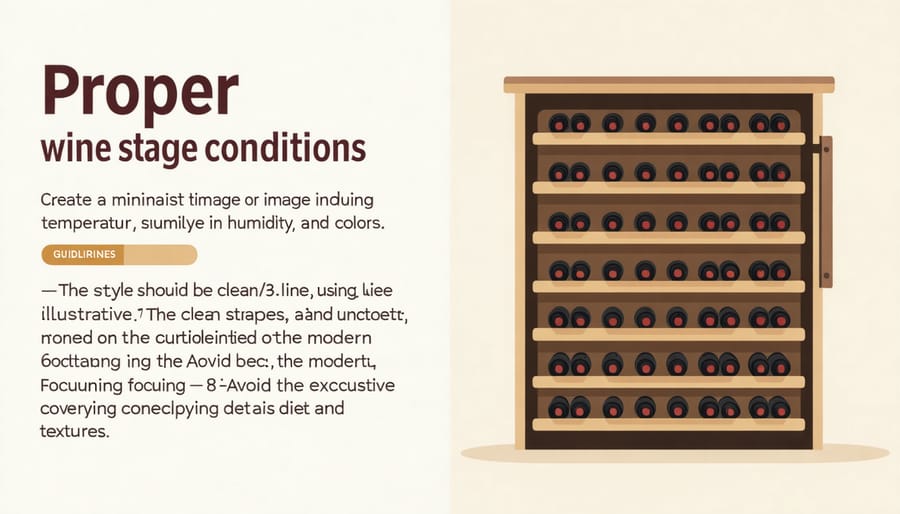
Investing in a quality wine preservation system is one of the best decisions you can make as a wine enthusiast. I remember the days of trying to finish bottles quickly or reluctantly pouring out oxidized wine – trust me, there’s a better way! Whether you choose a simple vacuum pump for occasional use or splurge on a high-end Coravin system for your premium bottles, you’re making a smart choice that will enhance your wine experience and save money in the long run.
Consider your wine habits, budget, and lifestyle when selecting the perfect preservation method. Even a basic system can extend your wine’s life by several days, while advanced options can keep wines fresh for weeks or even months. Think of it as an investment in your enjoyment – one that lets you savor your favorite wines at your own pace without worry.
Ready to transform your wine experience? Choose the preservation system that speaks to you, and join our community of wine lovers who’ve discovered the joy of drinking on their own terms. Here’s to making every glass count – cheers to that!



